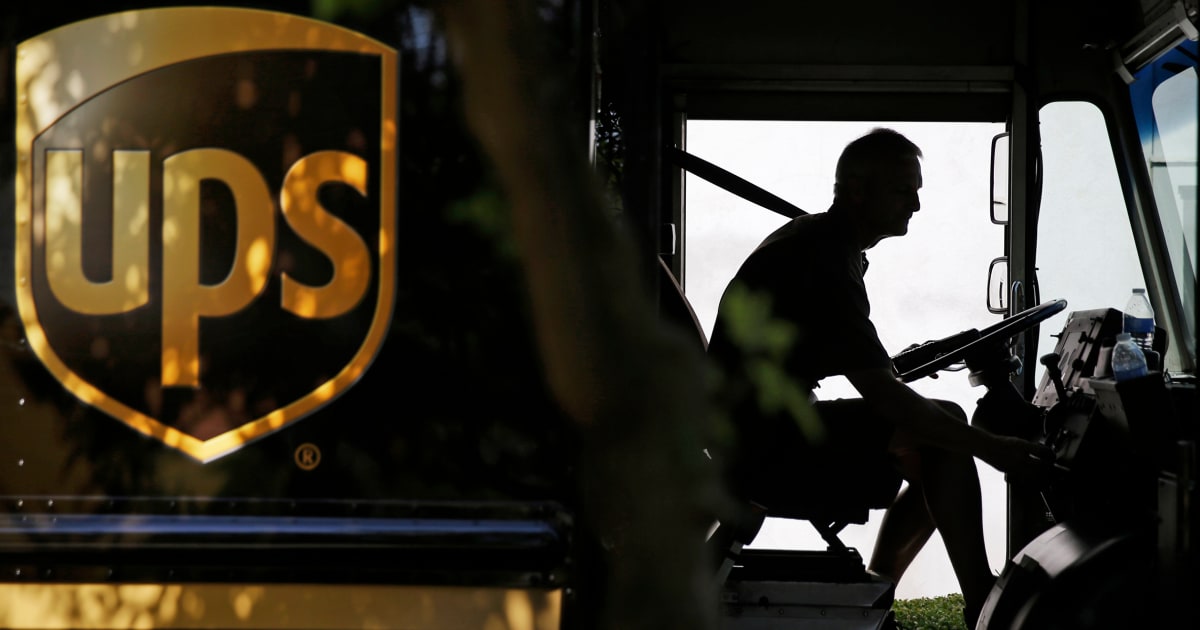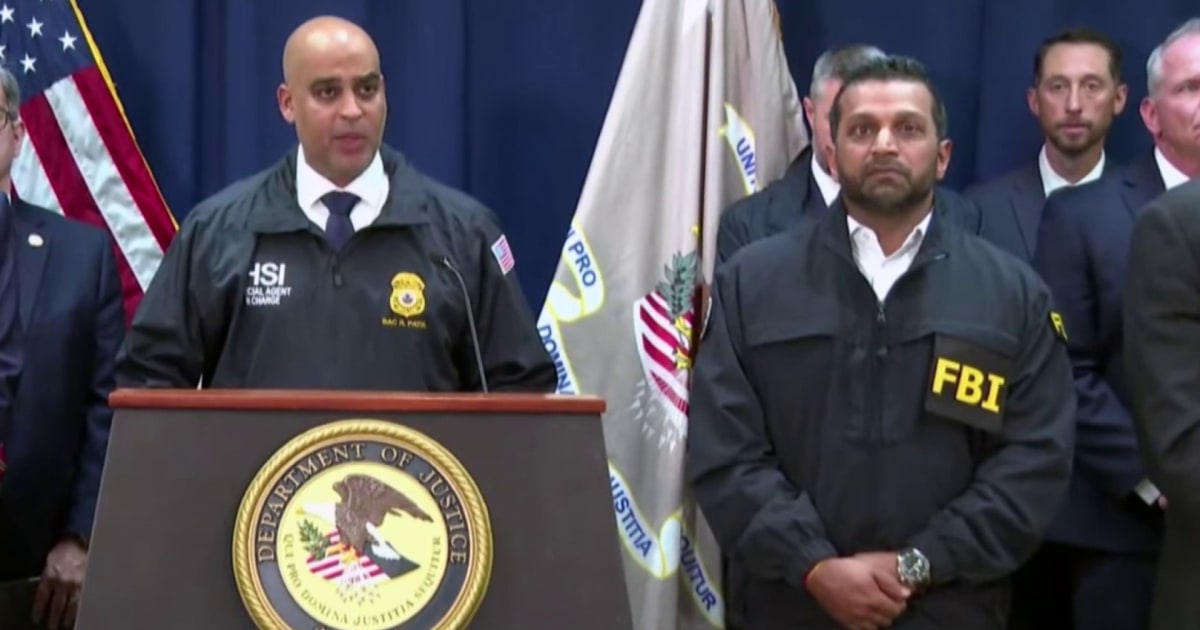Thousands of UPS shipments to the U.s. are trapped at hubs because they can’t clear the Trump administration’s maze of new customs requirements.
Source link
Oct. 10, 2025, 1:45 AM EDTBy Kayla SteinbergThousands of U.S.-bound packages shipped by UPS are trapped at hubs across the country, unable to clear the maze of new customs requirements imposed by the Trump administration.As packages flagged for customs issues pile up in UPS warehouses, the company told NBC News it has begun “disposing of” some shipments.Frustrated UPS customers describe waiting for weeks and trying to make sense of scores of conflicting tracking updates from the world’s largest courier.“I’ve never seen anything like this before,” Matthew Wasserbach, brokerage manager of Express Customs Clearance, said of the UPS backlog. “It’s totally unprecedented.”Wasserbach’s New York City-based shipping services firm helps clients move shipments through customs. He said the company has seen a spike in inquiries for help with UPS customs clearance.A Boeing 747 operated by UPS on the tarmac at Louisville International Airport in Kentucky during a winter storm on Feb. 3, 2022.Luke Sharrett / Bloomberg via Getty Images fileMore than two dozen people who are waiting for their UPS packages explained the circumstances of their shipments to NBC News.They described shipments of tea, telescopes, luxury glassware, musical instruments and more — some worth tens of thousands of dollars — all in limbo or perhaps gone. Others have deep sentimental value: notebooks, diplomas and even engagement rings.The frustration has exploded online, with customers sharing horror stories on Reddit of missing skin care products, art and collectibles.They are confused and angry, and they want answers.Packages destroyed? “It’s almost impossible to get through to anybody to figure out what is happening,” said Ashley Freberg, who said she is missing several boxes she shipped via UPS from England in September. “Are my packages actually being destroyed or not?”Freberg’s boxes of journals, records and books were shipped on Sept. 18, according to tracking documents she shared with NBC News. Over the next two weeks, she received two separate notifications from UPS that her personal mementos had not cleared customs and as a result had been “disposed of” by UPS.Then, on Oct. 1, a UPS tracking update appeared for her packages, saying they were on the way. The tracking updates Freberg showed NBC News for that shipment revealed it was the most recent update she had received. UPS transport jets wait to be loaded with packages at UPS Worldport in Louisville, Ky., on April 27, 2021.Timothy D. Easley / AP fileWhile sentimental value is impossible to measure, other customers fear they will not be able to recover financially if their goods were destroyed.Tea importer Lauren Purvis of Portland, Oregon, said five shipments from Japan, mostly containing matcha green tea and collectively worth more than $127,000, were all sent via UPS over the last few weeks and arrived at UPS’ international package processing hub in Louisville, Kentucky. Purvis has yet to receive any of the shipments, only a flurry of conflicting tracking updates from UPS.A series of notifications for one shipment, which she shared with NBC News, said that the shipment had not cleared customs and that UPS had disposed of it. But a subsequent tracking update said the shipment had cleared customs and was on the way.“We know how to properly document and pay for our packages,” Purvis said. “There should be zero reason that a properly documented and paid-for package would be set to be disposed of.”At least a half-dozen people described an emotional seesaw they were put through by weeks of contradictory UPS tracking updates about their shipments. The updates, they said, compounded the stress of not knowing what had really happened to their possessions.A UPS Boeing 767 aircraft taxis at San Diego International Airport, in San Diego, Calif., August 15, 2025.Kevin Carter / Getty Images fileAJ, a Boston man who asked that NBC News use only his initials to protect his privacy, said he shipped a package from Japan via UPS on Sept. 12 including Japanese language books, a pillow and a backpack. After it sat in Louisville for nearly two weeks, AJ got a tracking update on Sept. 26, one of several that he shared with NBC News. “We’re sorry, your package did not clear customs and has been removed from the UPS network. Per customs guidelines, it has been destroyed. Please contact the sender for more information,” it read.UPS tracking updates for a package shipped from Japan to the United States.Obtained by NBC NewsThree days later, on Sept. 29, he received another, and this one read: “On the Way. Import Scan, Louisville, KY, United States.” For a moment, it appeared as though AJ’s shipment might have been found. But less than 24 hours after his hopes were raised, another tracking update arrived: “We’re sorry,” it began. It was the same notice that his package had “been destroyed” that he had received on the 26th. Two minutes later, he got his final update: “Unable to Deliver. Package cannot clear due to customs delay or missing info. Attempt to contact sender made. Package has been disposed of.” A mess for customs International shipping was thrown into chaos after the long-standing “de minimis” tariff exemption for low-value packages ended on Aug. 29. Packages with values of $800 or less, which were previously allowed to enter the United States duty-free, are now subject to a range of tariffs and fees.They include hundreds of country-specific rates, or President Donald Trump’s so-called reciprocal tariffs, as well as new levies on certain products and materials. President Donald Trump holds a chart as he speaks about reciprocal tariffs at a “Make America Wealthy Again” event at the White House on April 2.Brendan Smialowski / AFP – Getty Images fileThe result is that international shipping to the United States today is far more complex and costly than it was even two months ago. The sweeping changes have caught private individuals and veteran exporters alike in a customs conundrum.It is difficult to know the exact number of the packages that are stuck in UPS customs purgatory. Shipping companies guard their delivery data closely. UPS reported to investors that in 2023, its international service delivered around 3.2 million packages per day.This week, the company told NBC News that it is clearing more than 90% of the packages it handles through customs on the first day. The rest of the packages, or less than 10%, require more time to clear customs and need to be held until they do. That could easily mean that thousands of UPS packages every day are not clearing customs on their first try.No easy fixIn a statement to NBC News, UPS said it is doing its best to get all packages to their destinations while abiding by the new customs requirements.“Because of changes to U.S. import regulations, we are seeing many packages that are unable to clear customs due to missing or incomplete information about the shipment required for customs clearance,” it said. UPS said it makes several attempts to get any missing information and clear delayed shipments, contacting shippers three times.“In cases where we cannot obtain the necessary information to clear the package, there are two options,” it said. “First, the package can be returned to the original shipper at their expense. Second, if the customer does not respond and the package cannot be cleared for delivery, disposing of the shipment is in compliance with U.S. customs regulations. We continue to work to bridge the gap of understanding tied to the new requirements and, as always, remain committed to serving our customers.”A conveyor belt carries envelopes and small packages past UPS workers to their destinations at Worldport on Nov. 20, 2015.Patrick Semansky / AP, fileNBC News asked UPS precisely what it does with packages when it tells customers their shipments have been unable to clear customs and have been “disposed of.” It would not say. On Sept. 27, a shipper in Stockholm received a formal notification from UPS that two packages her glassware company sent to the United States — which failed to clear customs — would be destroyed.“We are sorry, but due to these circumstances and the perishable nature of the contents, we are now required to proceed with destruction of the shipment in accordance with regulatory guidelines,” UPS told Anni Cernea in an email she shared with NBC News.The email continued, “There is no need to contact our call center for further information or to attempt to clear this shipment.”Cernea said, “It’s just outrageous that they can dispose of products like this without approval from either the sender or recipient.”From now on, Cernea said, she plans to ship her products via UPS rival FedEx.Trouble aheadCernea’s decision to switch carriers hints at the worst-case scenario for UPS, which is that people could abandon the company. It is a potential crisis for the roughly $70 billion company. The company’s stock price is already down more than 30% this year, which analysts attribute to a mix of tariffs, competition and shifting shopping habits.As she awaits her missing journals and diplomas from England, Freberg is looking ahead to the biggest shipping months of the year.“I can’t even imagine how bad the holidays are going to be, because that’s a time where loads of people are shipping stuff overseas,” she said.“If it doesn’t get solved soon, I can only see it becoming an even bigger issue.”Kayla SteinbergKayla Steinberg is a producer at NBC News covering business and the economy.




